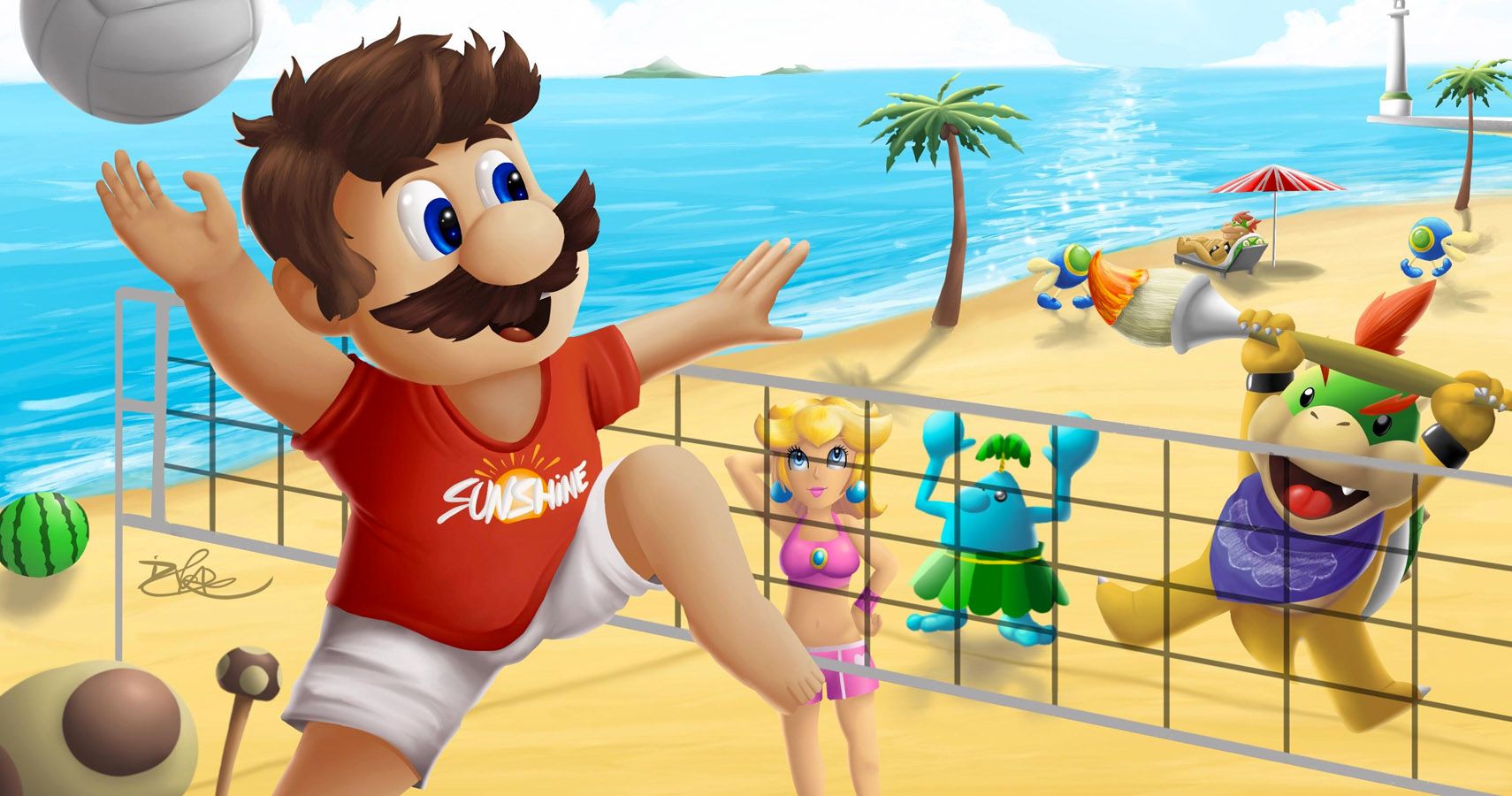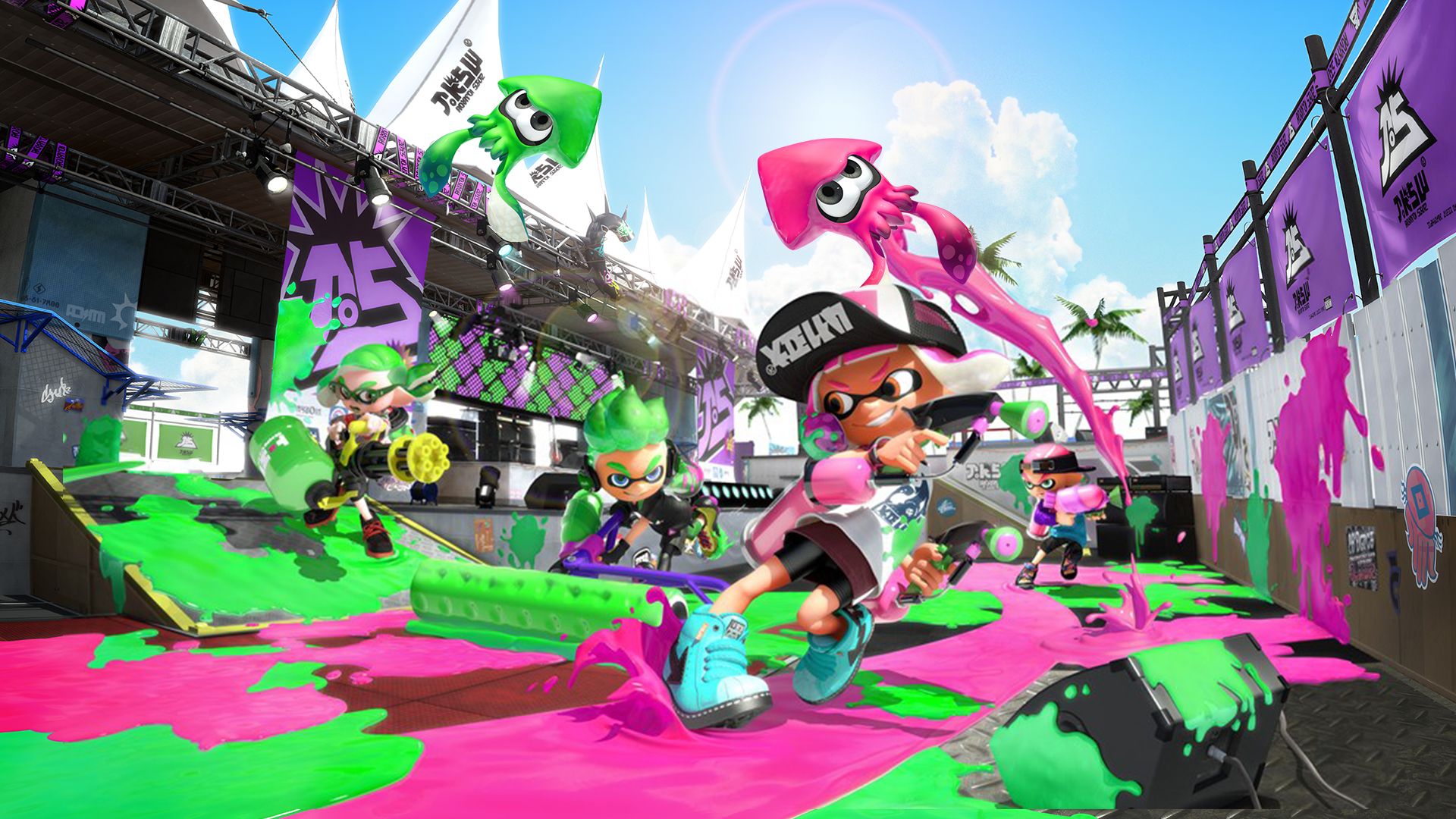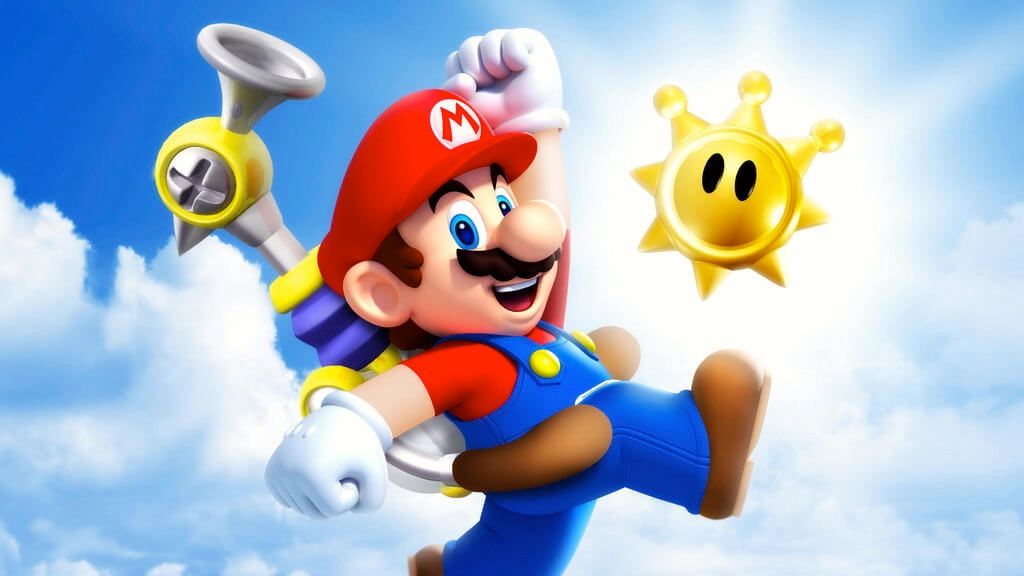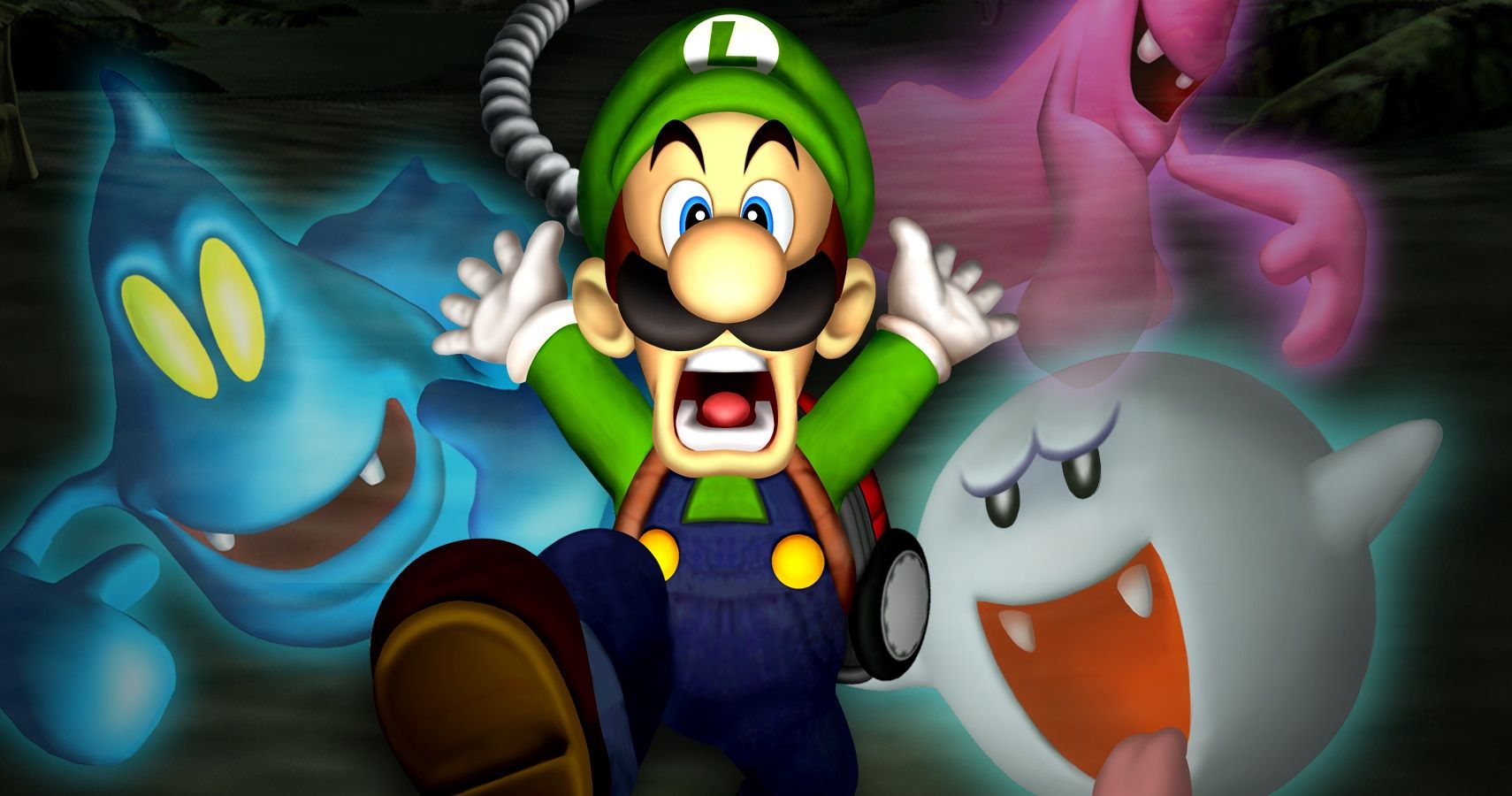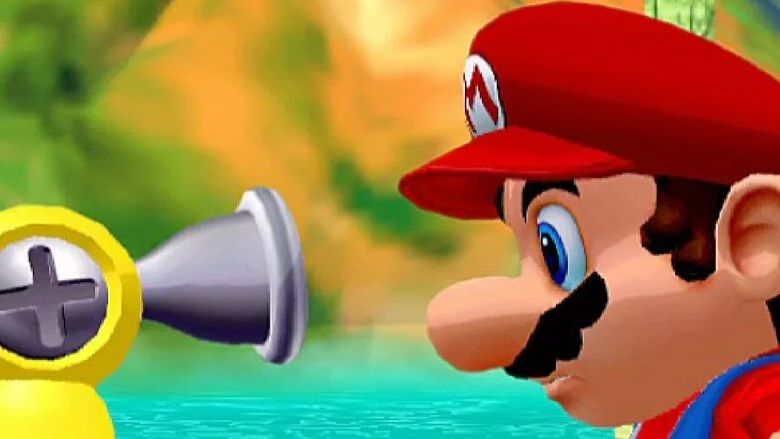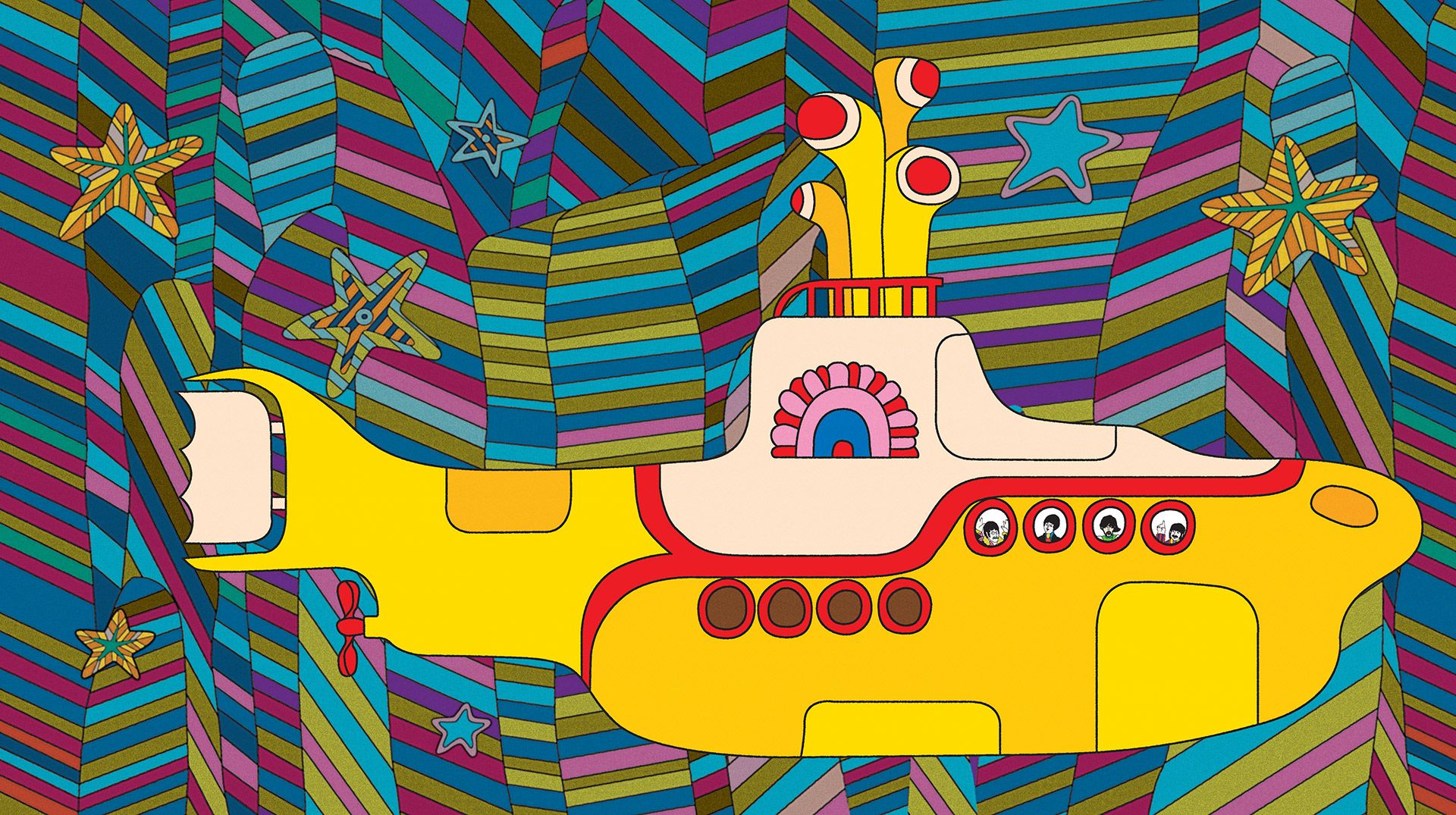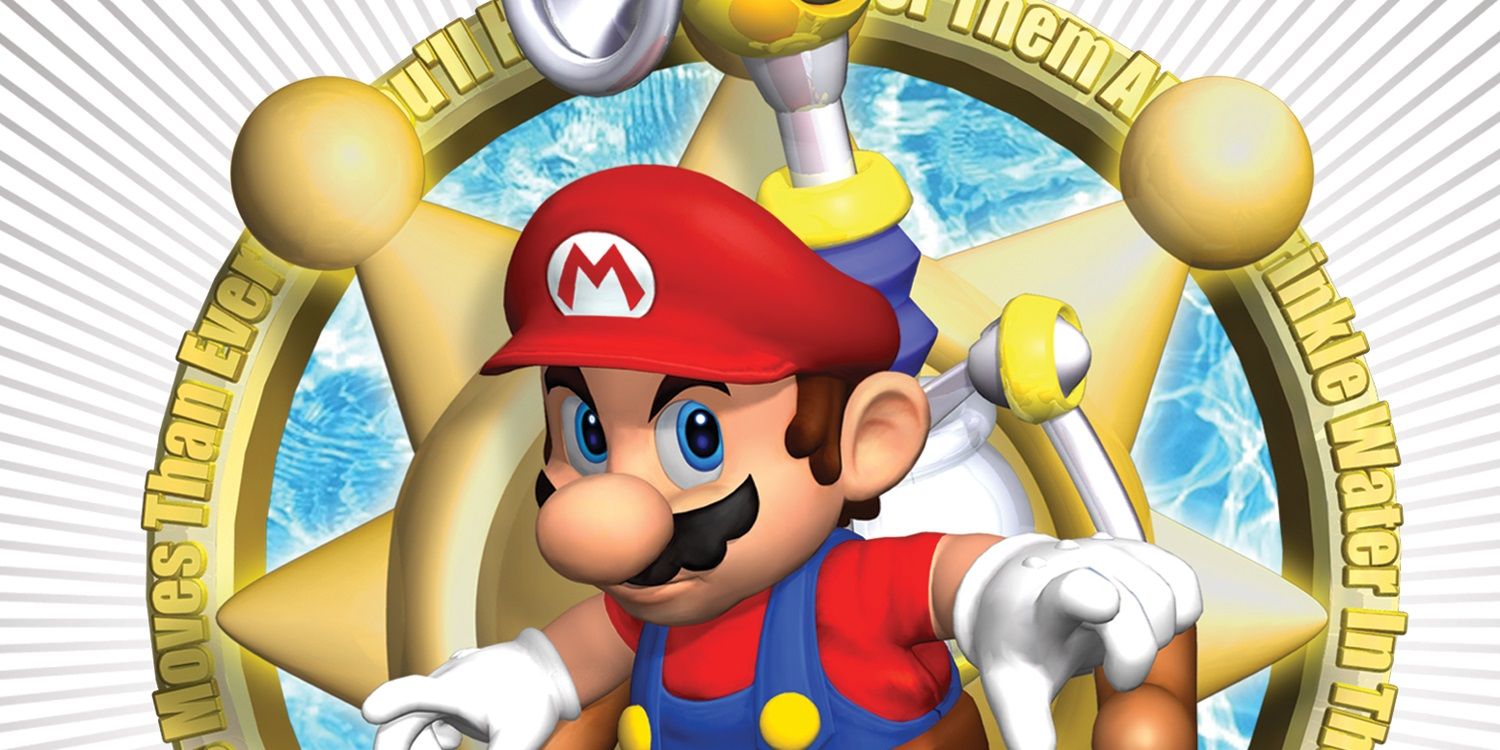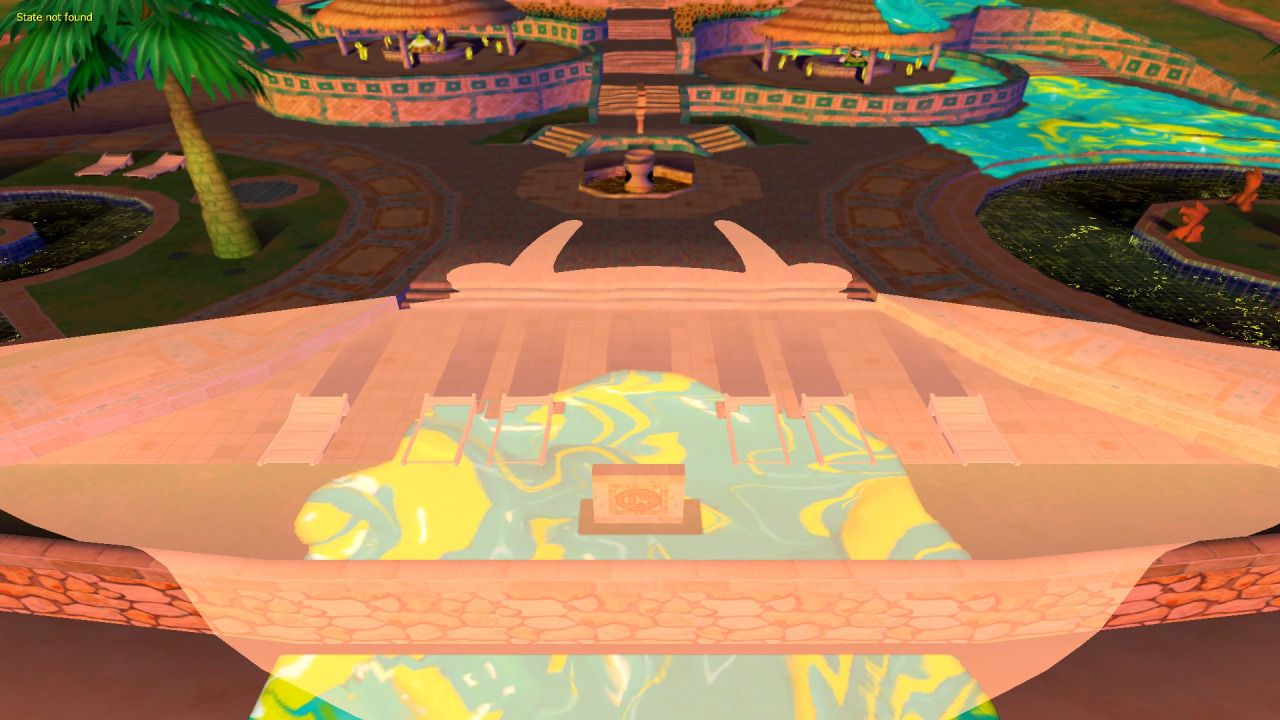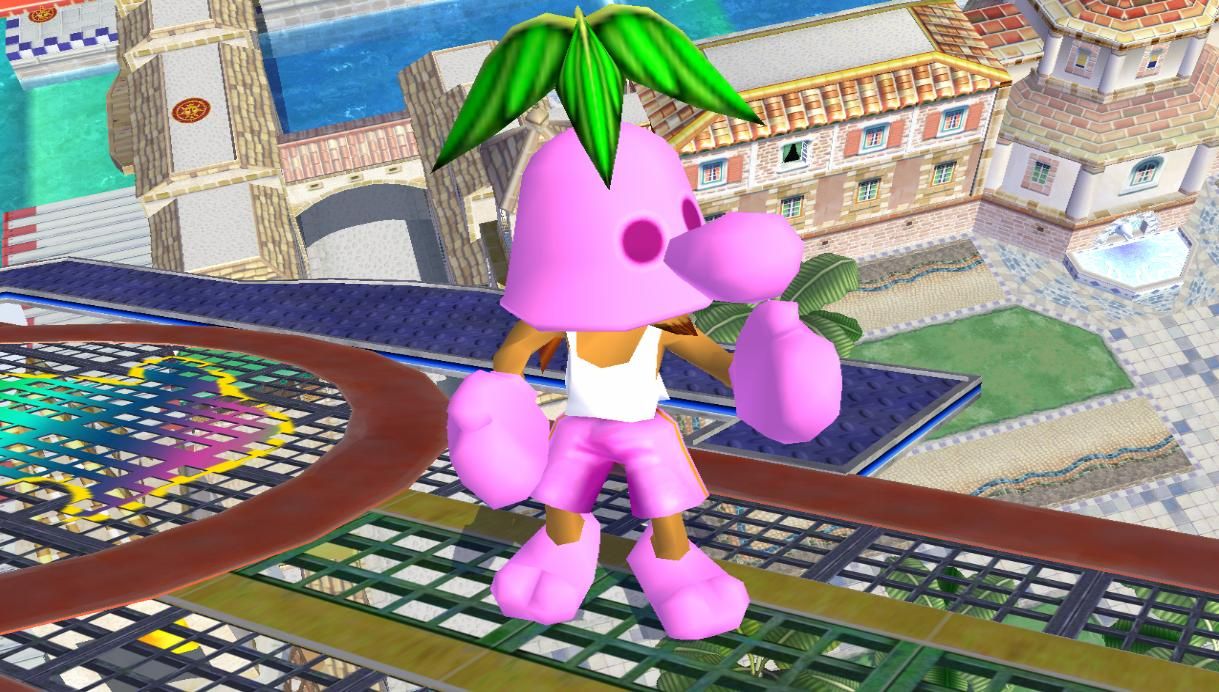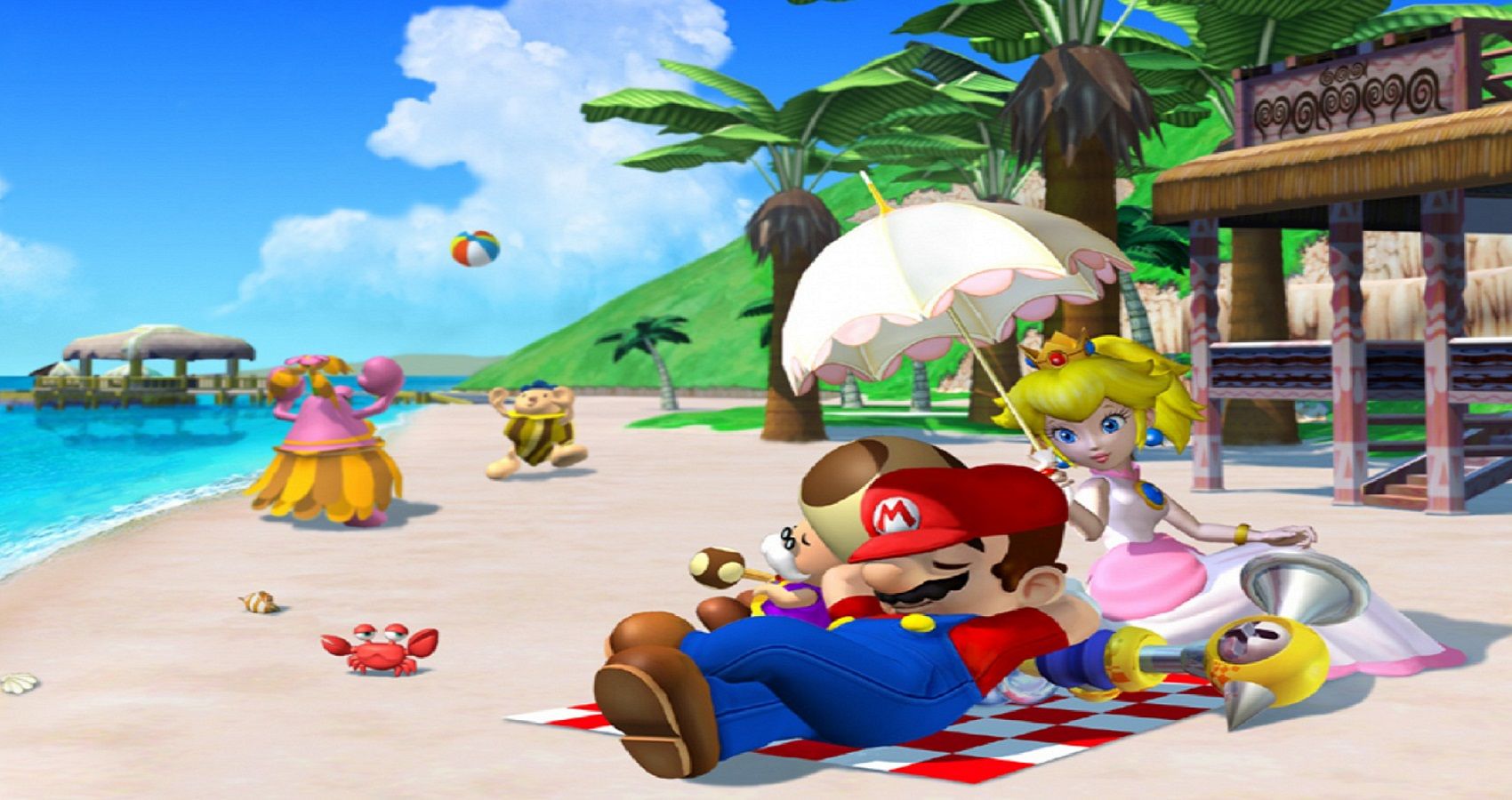Of all the main series Mario games, Super Mario Sunshine is among the strangest. It shook up the core gameplay, took Mario away from the Mushroom Kingdom, and had few of the classic enemies. In many ways, the game was emblematic of Nintendo's period of experimentation with the GameCube. But because of all Sunshine's differences, there a good number of interesting facts about it. The game's long development saw many interesting but unrealized ideas, and easter eggs to Nintendo and beyond are hidden throughout Isle Delphino. Joining Mario on his summer vacation, we found a few of the better ones.
10 Origins Of Splatoon
Something all gamers know about Mario Sunshine is its clean-up mechanic, Mario using his water cannon to wash away grime around the island. It's unique, but originally Nintendo would have taken it further. Players wouldn't just clean up the muck, they'd spread their own paint around too.
Presumably this would have played into the planned multiplayer mode. Technical limitations kept them from implementing this ambitious idea, but Nintendo held onto the dueling paint concept. Eventually they turned it into a new series, Splatoon.
9 FLUDD's Original Design
FLUDD, the water cannon backpack Mario wears throughout Sunshine, became one of the game's defining features. Its multiple different nozzles really opened up the world and gameplay. One nozzle had be left on the cutting room floor though.
The developers have said they were going to give FLUDD a "gun type nozzle", but scrapped it because of controversy in the United States. They didn't want Mario to imply a greater level of violence. Probably a smart move in the long run.
8 Luigi's Mansion Connections
Sunshine was not technically the first Mario game on the GameCube. That honor goes to Luigi's Mansion and Nintendo slipped in a few easter eggs to show it. The obvious ones are FLUDD and Shadow Mario's magic paintbrush. Both were created by Professor E Gadd, who built Luigi's Poltergust.
But a funnier one comes in the Boo-infested Hotel Delfino. A janitor tells Mario he wishes someone would just suck up all the Boos with a vacuum cleaner, to which Mario gives him a dirty look. Given that he spent Luigi's Mansion trapped in a painting, we don't blame him.
7 Voice Work
Mario games are not known for their in-depth, cinematic cutscenes. Sunshine broke from that mold by offering a first for the series, cutscenes with fully-voiced spoken dialogue. Aside from Mario, many of the characters, including Princess Peach, Bowser, and Toadsworth, spoke aloud for the first time.
The novelty was marred by bad audio mixing though, and the series returned to text boxes with grunts in the next installment. Still, it's yet another way Sunshine stood apart from its fellow Mario games.
6 The Beatles Reference in Ricco Harbor
The tropical setting of Isle Delfino made a nice break from the rolling green hills of the Mushroom Kingdom. But it also allowed some out of left field references and shout-outs that otherwise might not slip in. One of the more subtle can be found in the Ricco Harbor stage.
Docked in the harbor is a yellow submarine with a familiar shape. Now this hasn't been confirmed as a reference to the famous Beatles movie, but it seems likely. Fantastical tropic setting? A bad guy in blue? Great music? Yep, Beatles reference.
5 All The Italian
Mario's heritage as an Italian doesn't often come up in his games, except for Sunshine. Nintendo paid subtle homage to the plumber's homeland throughout the game. Mario himself says "Arrivederci" (Italian for "Good Bye") when he loses a life, but it goes further.
All the locations on Isle Delfino have Italian names like Gelato Beach (Ice Cream Beach) and Noki Bay (Shell Bay). Delfino itself means "Dolphin" in Italian, and is a double reference to the GameCube's development code name.
4 The Secret Of Sirena Beach
The Sirena Beach stage is remembered for its haunted hotel and rage-inducing Manta Ray boss. But if looked at from overhead, gamers may notice something familiar about the beach's layout. It's actually shaped like the GameCube controller. It's true.
Viewed from the front, the palm tree on the right is the joystick and the pools on the left are placed like the A, B, X, and Y Buttons. The pitfire in the center is the Start button, and the two cabanas in back are the D-Pad and C-stick. Though hard to see, it's a cool Easter Egg.
3 Il Piantissimo's Secret Identity
Il Piantissimo is a weird guy. He pops up throughout Sunshine, challenging Mario to races, and claims to be a Pianta. He's not, obviously, he's a dude in a tank top with a bucket on his head. But who is he behind that bucket?
Digging into the game's code reveals he's someone familiar to Nintendo fans. Beneath the helmet, Il Piantissimo shares a character model with the running Postman from Legend of Zelda: Ocarina of Time and Majora's Mask. No wonder he's so fast.
2 Humans On Isle Delfino
When gamers reached New Donk City in Super Mario Odyssey, they had to deal with the whiplash of seeing Mario alongside realistic humans. According to some though, they might have gone through it much sooner. The original Spaceworld 2001 trailer for Mario Sunshine showed regular humans as citizens in Delfino Plaza alongside Mario and the Piantas.
They only appear briefly though, and this build of the game was very early. As such, no one really knows what was intended with these human NPCs. Perhaps they were just placeholders.
1 It Actually Made People More Helpful
We hear a lot about how video games can be bad for you, but Mario Sunshine proved the opposite to be true. A scientific study from 2009 looked at the links between video games and their player's behavior. Alongside more violent games, they examined "Prosocial Games" like Sunshine that encouraged cooperation and non-violent solutions.
The researchers found that subjects that played Sunshine were more likely to be helpful to other people than those who played more violent games by a significant margin. Seems like the type of game is more important than the games themselves.

